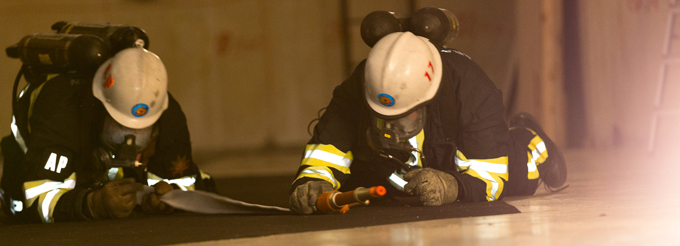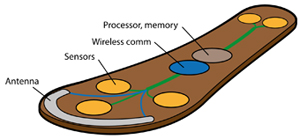Life-saving shoes
Positioning technology developed at KTH will save lives and protect emergency responders in hazardous environments.

Fire, smoke and zero visibility – a firefighter’s working environment is extreme. Now, with sensor-equipped footwear developed at KTH Royal Institute of Technology in Stockholm, firefighters can be even more effective at saving lives and property.
An innovative digital positioning system that uses sensors inside the heel of a boot makes it possible for emergency commanders to follow firefighters’ movements independently of infrastructure, and even 25 metres below ground.
Behind the project are Peter Händel, Professor of Signal Processing, John-Olof Nilsson, a researcher at KTH, and Jouni Rantakokko, a KTH researcher and research leader at the Swedish Defence Research Agency (FOI).
The system they designed includes advanced sensors such as accelerometer and gyroscope, plus a processor. It can withstand shock and extremely high temperatures and remains operational where GPS positioning systems fail.

A wireless module worn on the shoulder sends the data to operational command. The precise information about responders’ location and movements enables emergency coordinators to control operations remotely and ensure that the firefighters remain effective and safe under extremely dangerous conditions.
“When the firefighters can work safer and more efficiently, they can also save more lives,” says Peter Händel, Professor of Signal Processing at KTH, one of those who worked on the development of the sensor shoe.
The system has been tested successfully with firefighters in real time, 25 metres below ground.
The positioning capability can also be used by others – such as police and military response forces, or medical services at major incidents. Even rescue work far below the ground, as in mines, can be facilitated by being able to position both workers and rescue teams without the need for extensive infrastructure.
The next step for the researchers is to make the sensors part of the sole, which would increase flexibility and open up more uses than when built into the heel. The idea is also that the sole will also generate its own power supply. The aim is also that the sole can be thin enough for use in ordinary shoes.
The research project on the management system is in collaboration with the Swedish Defence Research Agency (FOI), Swedish rescue services and with the Indian Institute of Science (IISc) in Bangalore.
For more information contact Peter Händel, Professor of Signal Processing at KTH: (+46) 70-288 75 95 or ph@kth.se.
Jenny Axäll

